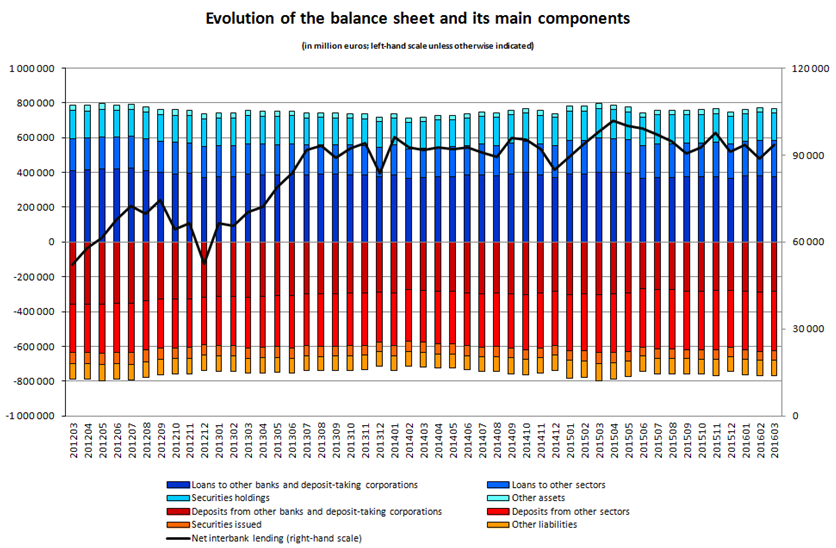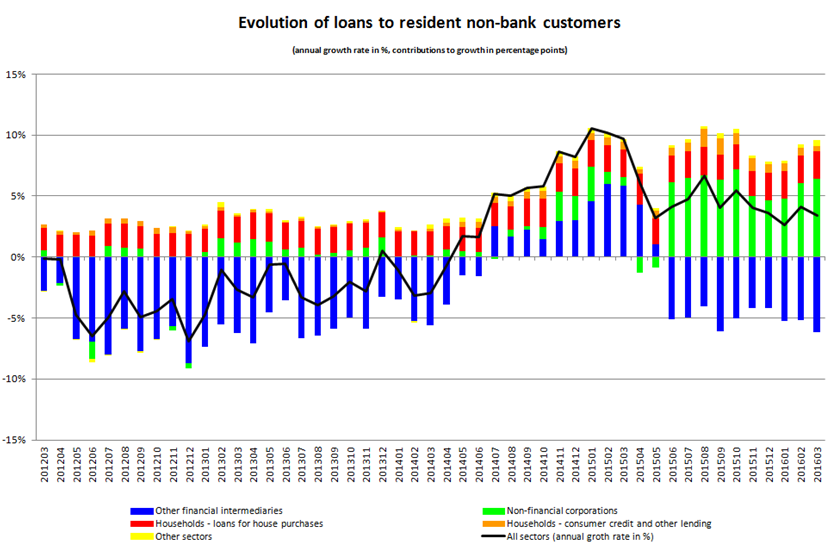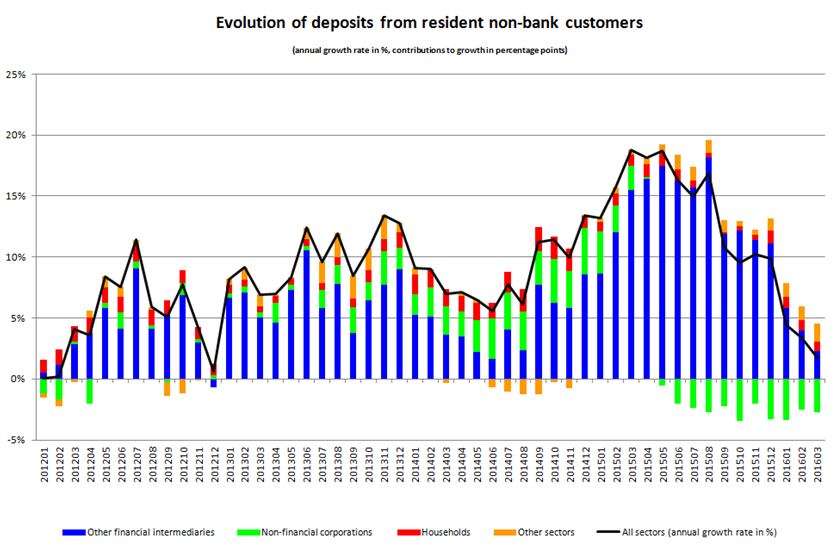Film about the BCL's missions and tasks
Evolution of credit institutions’ balance sheet
The Banque centrale du Luxembourg informs that, based on preliminary data, the aggregated balance sheet of credit institutions reached 768 222 million euros on 31 March 2016, compared to 771 066 million euros on 29 February 2016, a decrease of 0.4%. Between the months of March 2015 and March 2016, the aggregated balance sheet decreased by 3.6%.

On the asset side, the annual decrease was mainly owing to interbank loans, which decreased by 6.2% between March 2015 and March 2016. Over the same period, the reduction in liabilities was largely attributable to interbank deposits, which decreased by 6.8%.
The evolution of interbank loans and deposits has thus a significant impact on assets and liabilities. Indeed, interbank loans and deposits make up 49.1% and 36.9% on the asset and liability side respectively. Against this background, it should be pointed out that net interbank lending, that is to say the difference between interbank loans and deposits, remained positive and reached 93 691 million euros at the end of March 2016.
Loans to resident non-bank customers decreased by 169 million euros, or 0.2%, between February 2016 and March 2016. Between March 2015 and March 2016, these loans increased by 2 457 million euros (3.4%).

The progression of loans to resident non-bank customers was largely attributable to its main components, that is to say loans to non-financial corporations (NFCs), loans to other financial intermediaries (OFIs) and lending to households for house purchases. At end-March 2016, the respective shares of these loans stood at 25.9%, 29.9% and 33.1%. While loans to NFCs and loans for house purchases continued to progress between March 2015 and March 2016, OFI-lending significantly moderated the increase in loans to the resident non-bank sector. Indeed, between March 2015 and March 2016, loans to NFCs rose by 4 607 million euros (31.7%) and loans for house purchase by 1 581 million euros (6.9%), while OFI-lending dropped by 4 406 million euros, or 16.6%. However, it should be noted that the fall in OFI-lending and the concomitant rise in NFC-lending are owing to the reclassification of several large loans from the OFI to the NFC sector.
With regard to the liability side, deposits from the resident non-bank sector went up by 3 764 million euros (1.8%) between 29 February 2016 and 31 March 2016. On an annual basis, these deposits rose by 3 749 million euros, or 1.8%.

Between March 2015 and March 2016, the progression of deposits from the resident non-banking sector was largely attributable to its main component, that is to say deposits from the OFI sector, with a share of 70.5% as at 31 March 2016. Indeed, the year-on-year increase in deposits from the resident non-banking sector was largely due to a rise in OFI deposits, which comprise deposits made by monetary and non-monetary investment funds. Over the last twelve months, resident OFI deposits rose by 4 818 million euros, or 3.3%. With regard to other sectors, resident household deposits increased by 1 727 million euros, or 5.6%, while resident NFC deposits went down by 5 852 million euros (29.2%).
Finally, it should be noted that 144 credit institutions were officially registered in Luxembourg at end-March 2016.
The tables pertaining to the balance sheet of credit institutions can be consulted on the BCL’s website on the following page:
http://www.bcl.lu/en/statistics/series_statistiques_luxembourg/11_credit_institutions/index.html




